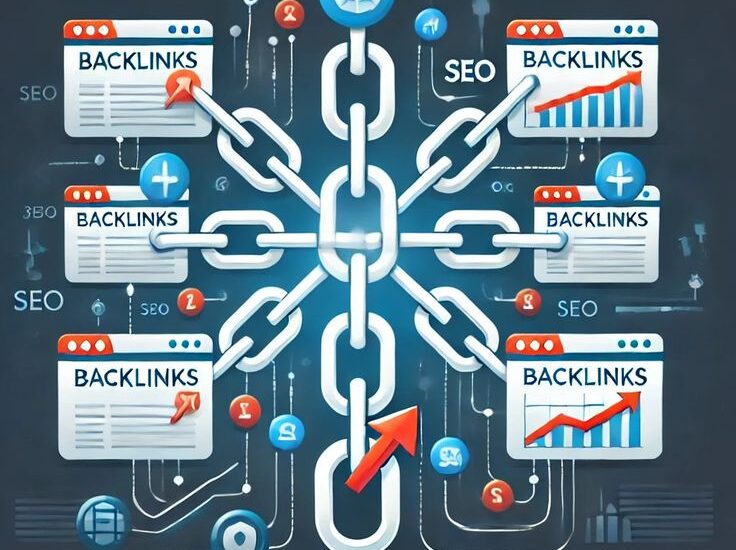Why Backlink Profiles Matter in SEO
In the world of search engine optimization (SEO), backlinks are often referred to as one of the most powerful ranking signals. But it’s not just the number of backlinks that matter—the overall quality, diversity, and structure of your backlink profile are just as crucial. If you’re aiming to climb to the top of Google’s search results, understanding your backlink profile is a must.
This guide will walk you through every aspect of backlink profiles—from what they are, to why they matter, how to analyze them, and most importantly, how to optimize your backlink profile to outrank your competitors.
What is a Backlink Profile?
A backlink profile is a comprehensive overview of all the inbound links pointing to your website. These are the links from other websites that direct users (and search engine crawlers) to your pages.
Your backlink profile includes:
- The number of backlinks
- The diversity of referring domains
- The quality of linking websites
- Anchor text distribution
- Follow vs. nofollow links
- The relevance of linking content
Together, these elements paint a picture of your site’s authority, trustworthiness, and popularity in the eyes of search engines.
Why Your Backlink Profile Is Important for SEO
Backlinks are like votes of confidence. When reputable sites link to yours, it sends a signal to search engines that your content is valuable and trustworthy. However, a poor or unnatural backlink profile can have the opposite effect and even lead to penalties.
A strong backlink profile helps:
- Increase domain authority
- Improve keyword rankings
- Drive referral traffic
- Enhance content visibility
- Boost credibility in your niche
Components of a High-Quality Backlink Profile
Let’s break down what makes a backlink profile strong and SEO-friendly:
1. Referring Domains Diversity
Having backlinks from a variety of domains is a major trust signal. Multiple links from the same domain hold less value than single links from different high-authority domains.
2. Domain Authority of Linking Sites
Links from websites with high domain authority (DA) carry more weight. A single backlink from a trusted source like Forbes or BBC can outweigh dozens from low-authority blogs.
3. Anchor Text Distribution
Anchor text is the clickable text in a hyperlink. A natural backlink profile includes:
- Branded anchor texts
- Generic phrases (like “click here”)
- Exact-match keywords
- Partial-match keywords
- Naked URLs
4. Follow vs. Nofollow Links
A healthy backlink profile includes a mix of both:
- Follow links pass on link equity (ranking power)
- Nofollow links don’t, but they still bring traffic and brand exposure
5. Link Relevance
Search engines look at the context. Links from sites related to your industry or niche are far more valuable than unrelated ones.
6. Link Placement
Where the link appears matters:
- In-content links (editorial) are more powerful
- Footer and sidebar links carry less value
How to Analyze Your Backlink Profile
To understand where you stand, use tools like:
- Ahrefs
- SEMrush
- Moz Link Explorer
- Google Search Console
Key metrics to monitor:
- Number of backlinks
- Number of referring domains
- Domain Rating (DR)/Domain Authority (DA)
- Spam score
- Anchor text variation
Regular backlink audits can help you find:
- Toxic or spammy backlinks
- Lost backlinks
- Opportunities for outreach or replacement
How to Build a Strong Backlink Profile
1. Create High-Quality Content
People link to content that is:
- Informative
- Well-researched
- Visually engaging
- Unique
2. Guest Posting
Contribute valuable content to relevant, authoritative blogs in your niche and earn editorial backlinks in return.
3. Broken Link Building
Find broken links on other sites and suggest your content as a replacement.
4. Skyscraper Technique
Find high-ranking content, improve it, and reach out to the same sites linking to the original.
5. HARO (Help A Reporter Out)
Respond to journalist requests for expert input and get featured in high-authority publications.
Identifying and Disavowing Toxic Backlinks
Toxic backlinks can hurt your rankings and trigger Google penalties. These include:
- Links from spammy or irrelevant sites
- PBN (Private Blog Network) links
- Over-optimized anchor text
Use tools like SEMrush or Ahrefs to spot bad links and use Google’s Disavow Tool to tell Google to ignore them.
Backlink Profile vs. Link Profile: What’s the Difference?
These terms are often used interchangeably, but there’s a subtle difference:
- Backlink Profile refers specifically to external links pointing to your site.
- Link Profile includes both internal and external links.
Both matter for SEO, but backlink profiles are more closely watched by search engines.
Backlink Profile Best Practices
Stay ahead by following these best practices:
- Focus on relevant, high-authority backlinks
- Avoid shortcuts like buying links or using black-hat tactics
- Maintain a natural anchor text distribution
- Regularly audit and clean up your link profile
- Use diverse link-building strategies
- Track and analyze performance monthly
Tools to Monitor and Improve Your Backlink Profile
Here are some go-to tools in 2025:
- Ahrefs: Industry leader for backlink data
- SEMrush: Great for audits and toxic link detection
- Moz: Beginner-friendly insights
- Google Search Console: Direct from the source
- Majestic SEO: Trust Flow and Citation Flow metrics
These platforms offer in-depth insights into what’s working and what needs improvement.
Common Mistakes That Hurt Your Backlink Profile
Avoid these pitfalls:
- Overusing exact-match anchor text
- Relying on low-quality directories
- Ignoring nofollow opportunities
- Not auditing links regularly
- Focusing only on quantity over quality
Conclusion: Strengthen Your SEO with a Clean Backlink Profile
Your backlink profile is more than just a number—it’s a strategic asset that directly impacts your SEO performance. Whether you’re a beginner or an SEO pro, understanding and managing your backlink profile is essential for long-term search success.
By building high-quality, relevant, and diverse backlinks, regularly auditing your profile, and steering clear of shady practices, you’ll put your website in the best position to rank higher, gain more traffic, and build authority in your niche.
Stay updated, stay clean, and watch your rankings climb.
Frequently Asked Questions (FAQs)
What is a backlink in SEO?
A backlink is a link from one website to another. In SEO, it’s considered a vote of confidence, signaling to search engines that the content being linked to is credible and valuable.
What makes a good backlink?
A good backlink comes from a high-authority, relevant website, uses natural anchor text, and is placed within the main content rather than in footers or sidebars.
How many backlinks do I need to rank?
There’s no magic number. Quality matters more than quantity. A few high-authority backlinks can be more effective than hundreds of low-quality ones.
How do I check my backlink profile?
You can use SEO tools like Ahrefs, SEMrush, Moz, or Google Search Console to analyze your backlink profile, monitor referring domains, and evaluate anchor text distribution.
Can bad backlinks hurt my site?
Yes. Spammy, irrelevant, or manipulative backlinks can negatively affect your SEO performance and may lead to penalties from search engines.
What is anchor text and why is it important?
Anchor text is the clickable part of a hyperlink. Using a balanced variety of anchor texts helps maintain a natural backlink profile and improves SEO.
What is a toxic backlink?
A toxic backlink is a harmful link from a spammy, unrelated, or black-hat SEO site that can lower your site’s rankings or result in a Google penalty.
Should I disavow backlinks?
Only disavow backlinks if you’re sure they’re spammy or toxic. Use Google’s Disavow Tool carefully to prevent search engines from counting those links against you.
What’s the difference between follow and nofollow backlinks?
Follow links pass on SEO value (link equity), while nofollow links do not. However, nofollow links can still bring traffic and visibility.
How often should I audit my backlink profile?
Ideally, you should audit your backlink profile quarterly. More frequent audits may be needed if you actively build links or notice sudden ranking changes.




